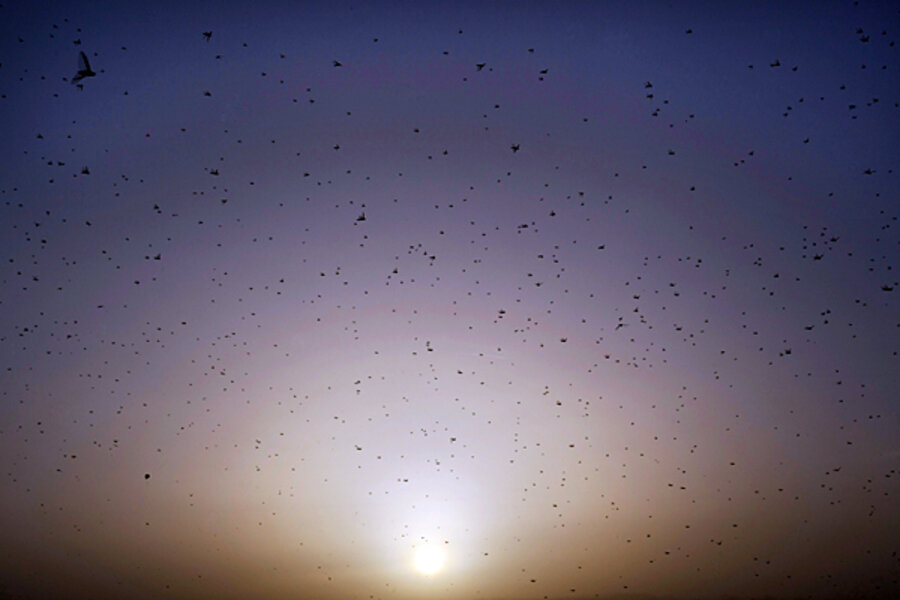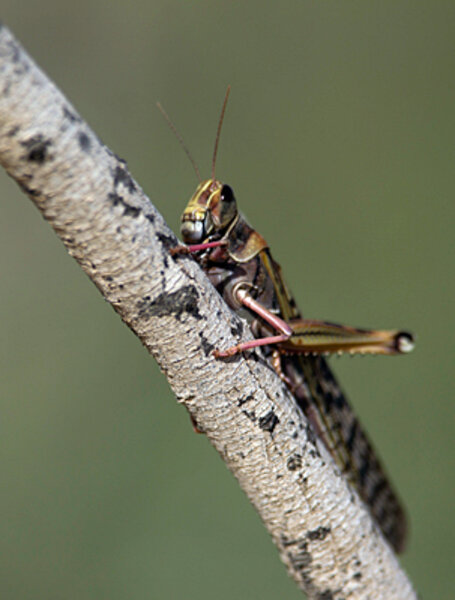Bible comes to life as locusts swarm Israel
Loading...
| Jerusalem
Locusts have descended on Israel this week, just in time for Passover. As millions of Jews commemorate the story of the children of Israel’s exodus from Egypt, including the 10 plagues that afflicted Pharaoh and his people, millions of the crunchy buggers are creeping all over Israel’s southern deserts.
This is nothing like the eighth plague of biblical times, in which locusts covered “the whole face of the earth” in a kind of collective punishment for the Egyptians whose leader refused to let his Hebrew slaves go free.
But this year is the first time since 2005 that modern Israel has had to combat locusts, which can swarm so thickly that drivers can’t see beyond their windshield. Potato farmers bemoaned the detrimental effect of a previous wave of the grasshopper-like insects several weeks ago. The Israeli Ministry of Agriculture, which was on “locust alert,” has responded quickly to the latest wave with pesticides.
But it’s not just Israel. Today the Palestinian Authority’s Ministry of Agriculture sprayed pesticides in Hebron, in the southern West Bank. And Egyptian farmers have suffered millions of dollars in damage after a swarm of about 30 million locusts hit Cairo earlier this month.
The most serious situation, however, appears to be in Sudan, where the United Nations Food and Agriculture Organization (FAO) head has warned that immature “hoppers” are lining up along a 1,000-kilometer (621-mile) stretch of the Nile and could pose a serious threat to Nile Valley crops in May.
OK, so locusts are not your average grasshopper. But still, how can they cause such massive damage?
Consider these arresting facts: They can eat their weight in crops every day; they can fly more than 80 miles a day – in swarms as dense as 200 million per square mile; and females can lay as many as 1,000 egg pods in roughly 10 square feet, according to an FAO fact sheet.
To put the threat in practical terms, one ton of locusts (just a fraction of your average swarm) can eat about as much food as 2,500 people can in a day, says FAO.
The Israelis have sought to reverse the food chain this Passover, however, by grilling the kosher insects for a crunchy, high-protein delicacy. And they’re not alone. Locust recipes abound.
A Mexican version from “Man Eating Bugs: The Art and Science of Eating Insects,” by Peter Menzel and Faith D'Aluisio, calls for roasting locust torsos and sprinkling them on homemade guacamole in a taco shell. Scrap that. Sprinkle and enjoy, the cookbook says.
B’tayavon, as the Israelis would say. Bon appétit.








